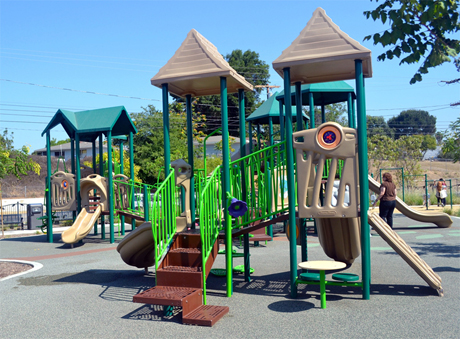I couldn’t quite believe what I was hearing as the bus filled with park professionals and advocates drove through some pretty tough urban neighborhoods, where working class people struggle to survive a tough economy. These were not spacious homes with great expansive lawns, but the close quarters of a suburb where people often work two jobs to make ends meet.
Here was the man in charge of Recreation & Parks’ Planning and Development Division. His department had absorbed cuts that took up 40 percent of the budget, including massive reductions to staff. The recession had hit his department as hard as it had the tough streets through which we now traversed. And yet, he was describing something incredible.
He was describing Los Angeles’ Recreation & Parks Department program that creates 50 new parks located in underserved parts of the community, or “park poor neighborhoods.” He talked about a coalition that included multiple partners working with his city staff—other governmental organizations, other city departments and a host of nonprofit organizations, as well as members of the communities.
“We were committed to bringing parks to these neighborhoods,” he said. “We worked with the residents to make sure the park met their needs.” He added, “In some cases they did not want the parks, so we listened to them and walked away, hoping that later on they’ll change their minds.” The speaker was Michael Shull, LA Parks & Rec department’s superintendent of planning and development, and he was showing us the first sites of the 50 Parks Initiative.
The initiative is the result of the 2009 Needs Assessment, which identified a huge disparity in park locations. The public charge was led by Commissioner Barry Sanders, supported by former Mayor Anthony Villaragosa, and carried out by John Kirk Mukri, general manager of LA Parks & Rec.
The community engagement was direct, honest and open. Some neighbors worried that new parks might become havens for gangs at night, so many of the parks have security systems, including timed locks. These “pocket parks” are often placed in spaces where a foreclosed house used to be, so they are small in size. And yet, having playground equipment for kids, a few pieces of adult exercise equipment and some shade, and voilà, a park is born.
By working with the neighbors in advance, specific needs were addressed. Communication made it possible for support to develop organically. Shull’s staff often did have to look for space in crowded areas. In one neighborhood they found a one-acre space belonging to Caltrans that was not being used. Because of legalities, it cannot be called a “park,” but it has a full playground, a paved walkway and even some public art.
Most exciting to me was the city staff’s boldness of vision, combined with the pro-active formation of partnerships and the welcome involvement of residents. The 50 Parks Initiative offers a great example for San Jose to emulate.
James P. Reber is the executive director of San Jose Parks Foundation, a veteran nonprofit entrepreneur and experienced special event planner and producer. He can be reached at
ja***@sa**********.org
or 408.893.PARK.

